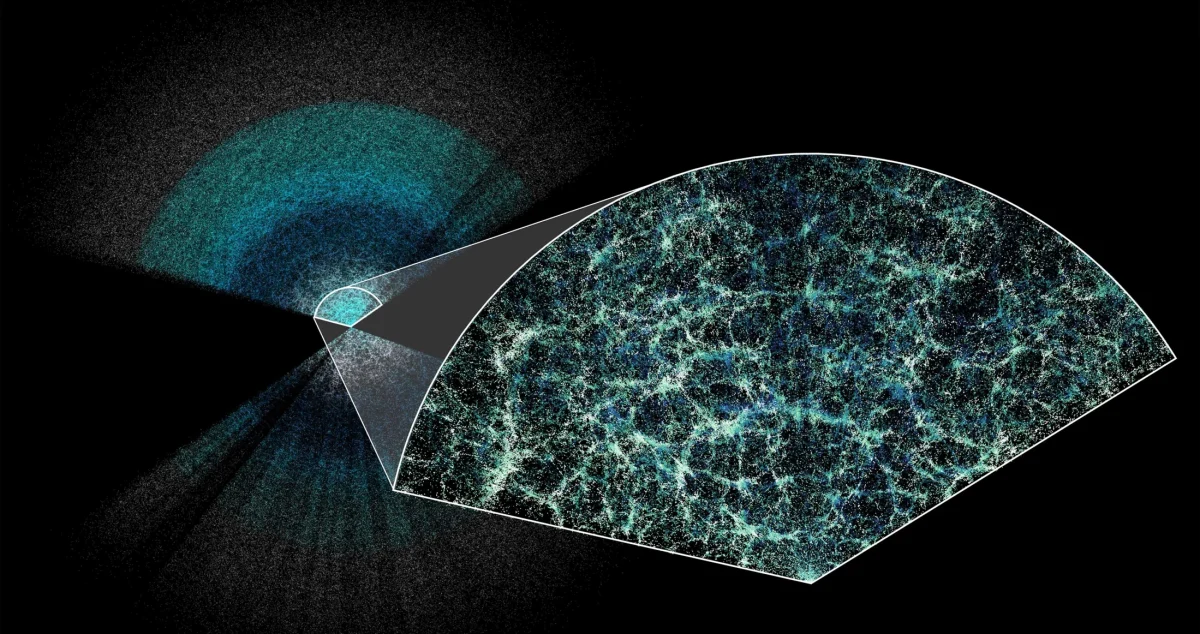UTD Professor of Physics and Astrophysics Mustapha Ishak-Boushaki presented the largest 3D map of the universe and his research team’s findings from the Dark Energy Spectroscopic Instrument to the American Physical Society in Sacramento, California on April 4.
Located at the Kitt Peak National Observatory in Arizona, the Dark Energy Spectroscopic Instrument (DESI) is capable of mapping 5,000 galaxies every 20 minutes. With collaboration from over 70 international institutions, by its fifth year, DESI is predicted to map over 30 million galaxies and 3 million quasars — otherwise known as supermassive black holes. By calculating the paths traveled by light, this leading model provides new insights into measuring the speed at which the universe expanded for over 11 billion years.
Current interpretations of the model map suggest that dark energy — which accounts for 68% of all energy in the universe and is thought to be responsible for the mysterious acceleration of our expanding universe — is decreasing. In modern astrophysics and cosmology, dark energy is understood to be a constant in physics, so if the model is correct, then our interpretation of the universe and theories like The Big Bang Theory may be incomplete.
“DESI found hints that a characteristic of this dark energy changes over time. This would mean that this is not a cosmological constant,” Ishak-Boushaki said to the Dallas Morning News. “This has been a mystery for 25 years. This discovery opens the door for us to go after it and learn more about its nature.”
As one of over 900 scientists working on DESI, Ishak-Boushaki is the lead co-chair on the Cosmology Parameter Estimation WG of the science committee with fellow co-chair, Arnaud De Mattia, an academic researcher from the Université Paris-Saclay in France. Ishak-Boushaki was one of the primary scientists that published key research within the first year of the DESI project, contributing to data models and measurements using baryon acoustic oscillations. Baryon acoustic oscillations are pressured sound waves that froze in place with the introduction of light in the universe and are currently used as a standard metric of measurement in cosmology since they are one of the few things in the universe that do not move.
Along with Ishak-Boushaki’s presentation of this information, DESI publicly released early data of the map, which includes for 1.2 million galaxies and quasars at 80 terabytes of data. The project is only within its third year out of its expected five-year study, which the data for is still being interpreted.
“The more data we collect, the better equipped we will be to determine whether this finding holds,” Ishak-Boushaki said to the UTD News Center. “With more data, we might identify different explanations for the result we observe or confirm it. If it persists, such a result will shed some light on what is causing cosmic acceleration and provide a huge step in understanding the evolution of our universe.”





